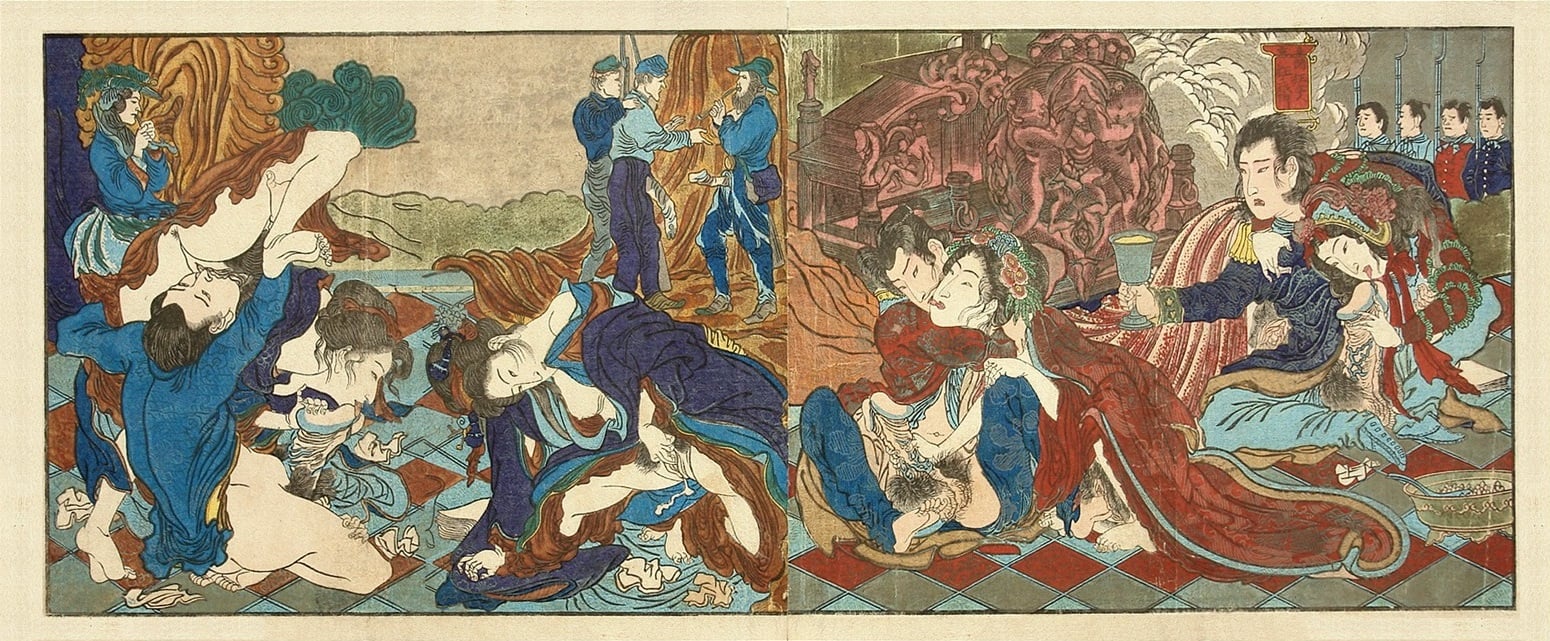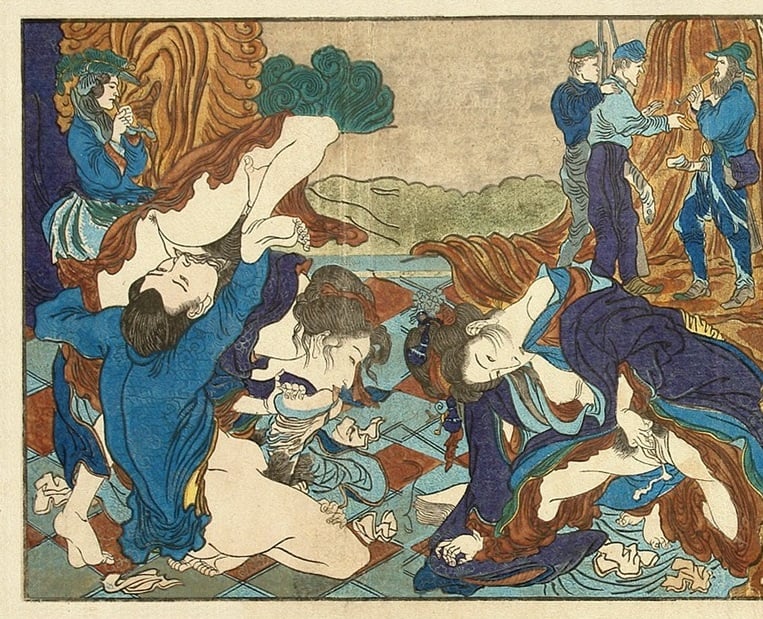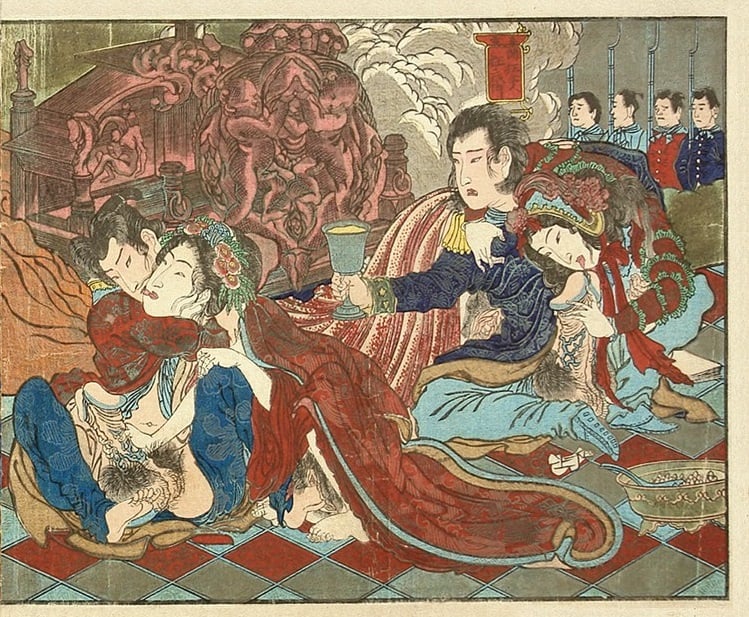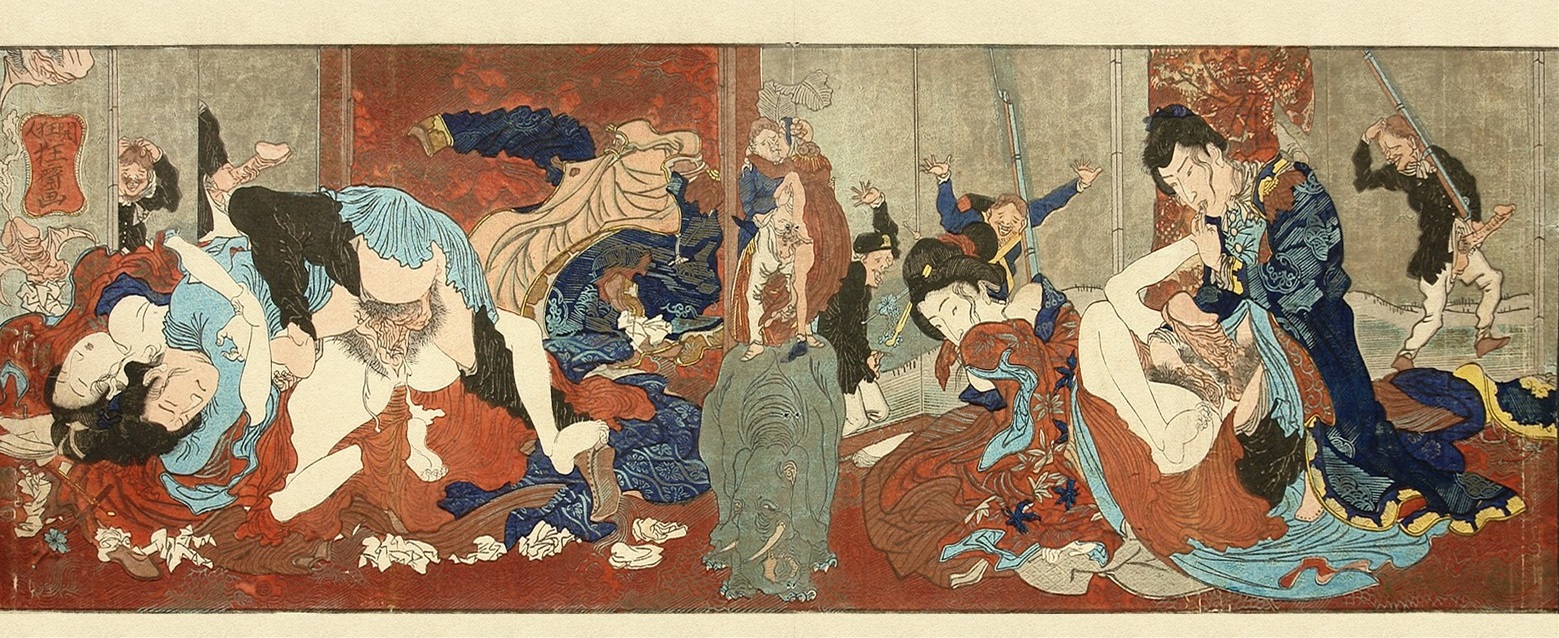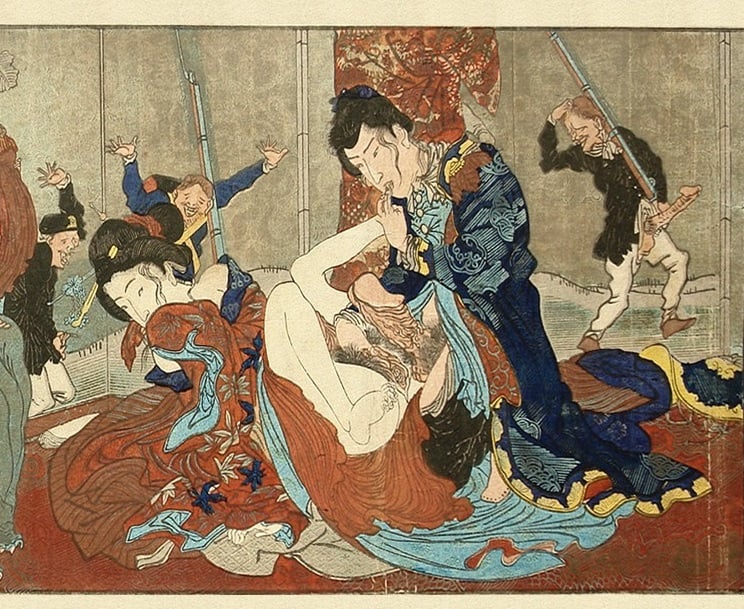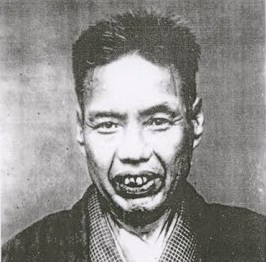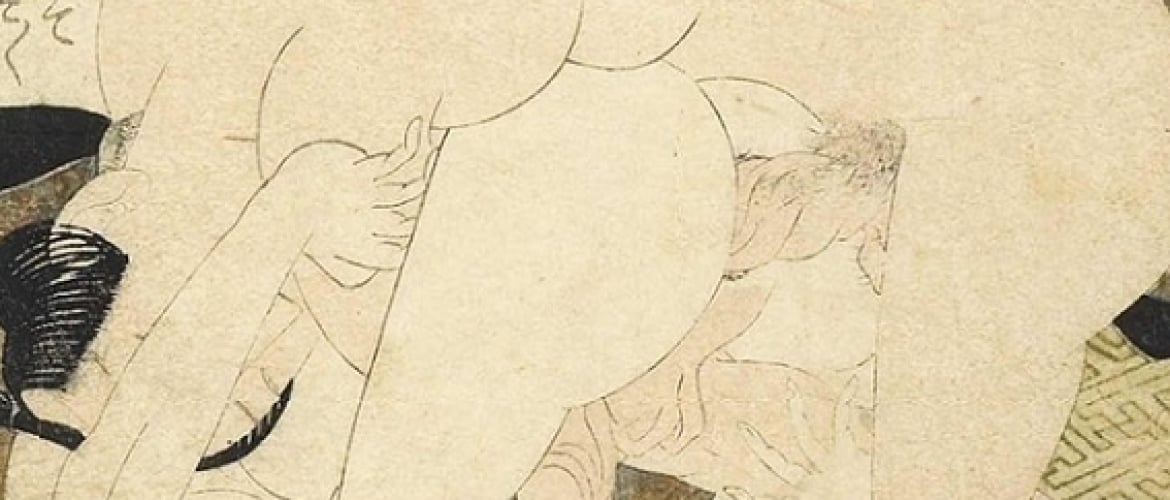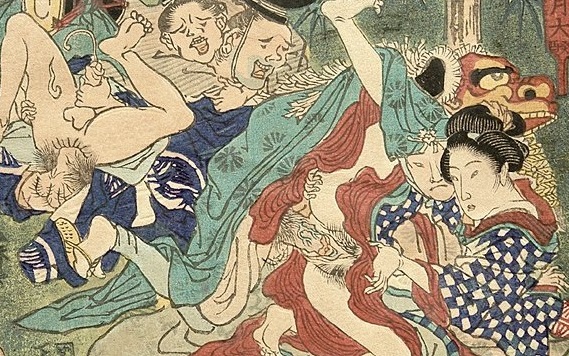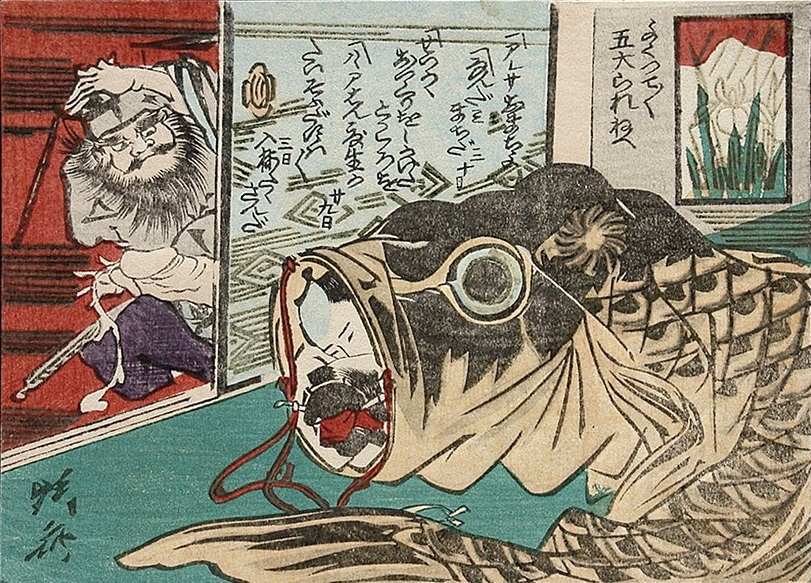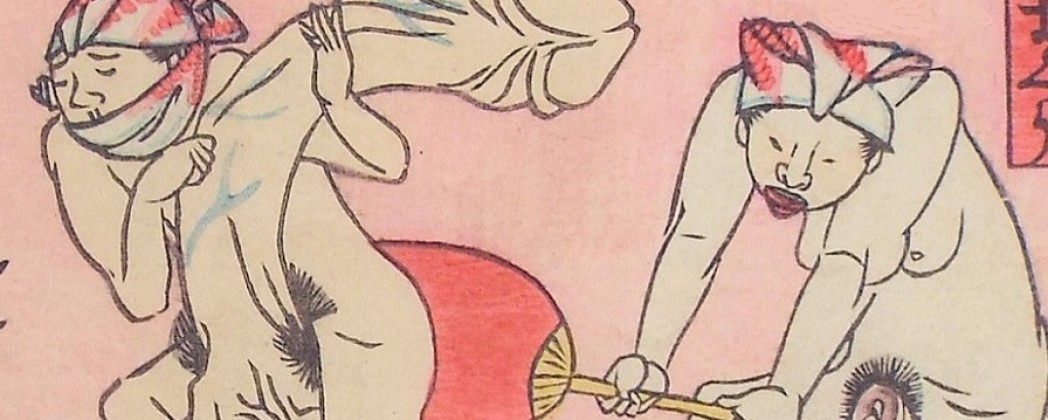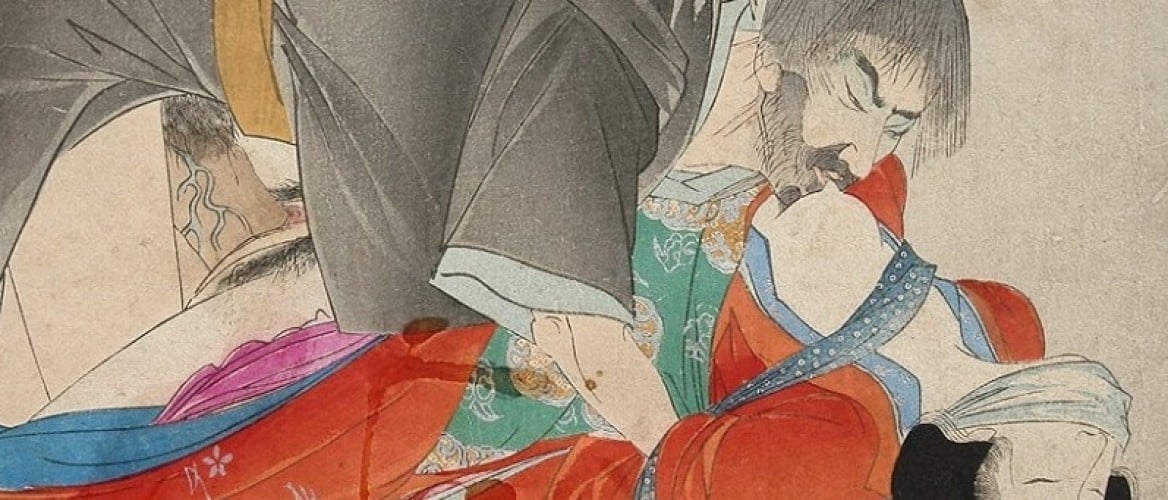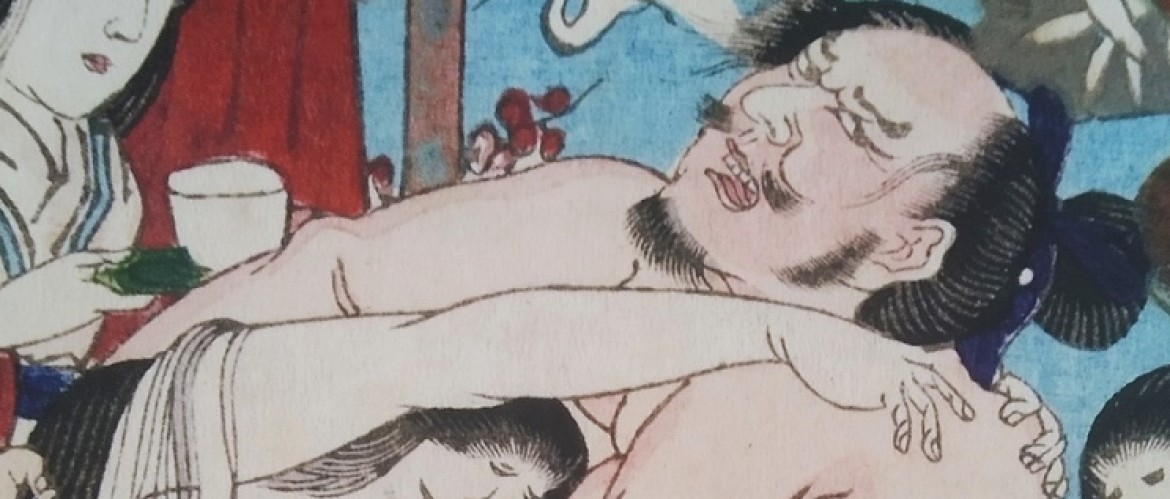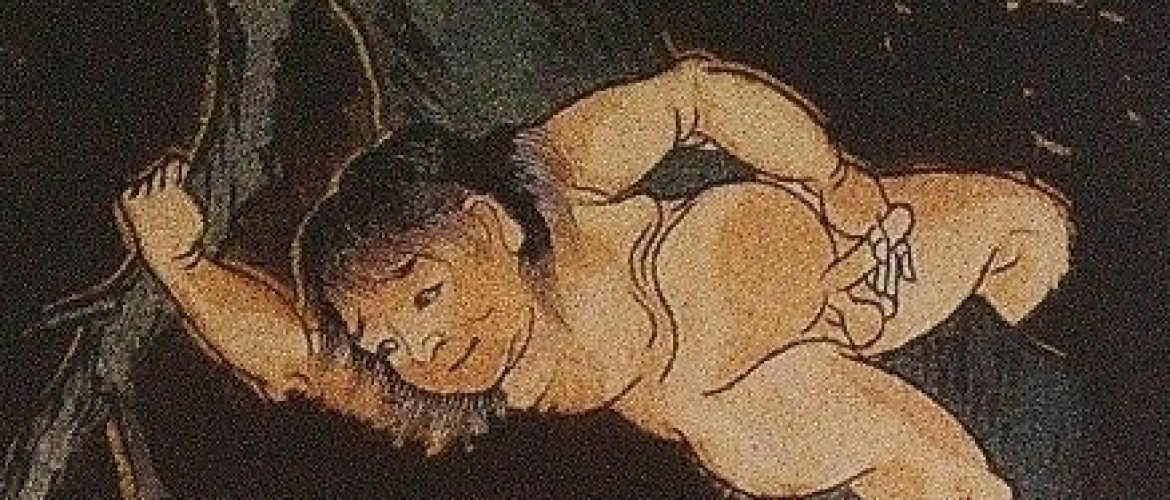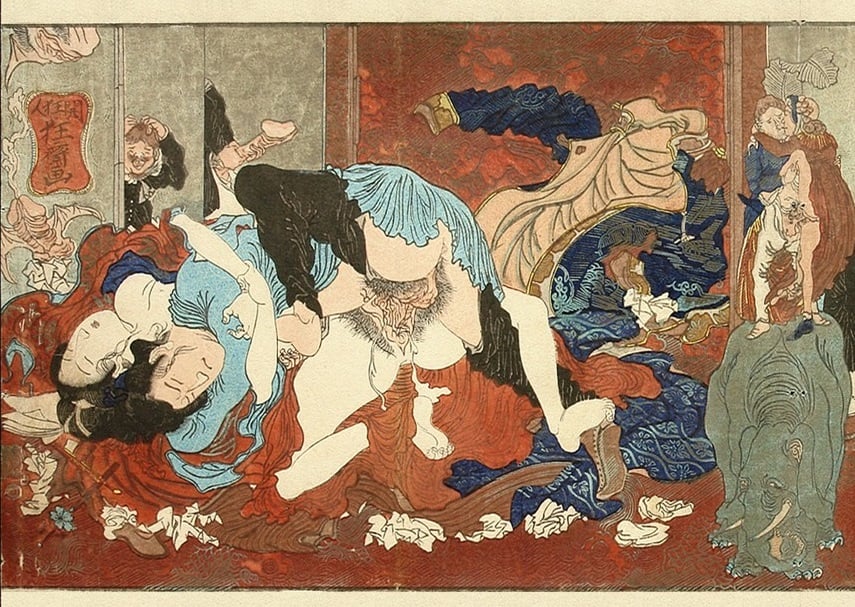
The phenomenal Meiji artist Kawanabe Kyosai (1831-1889) who was born to a samurai family after that class had lost its power and influence, was famous for using his art as an instrument of political protest against many of the new government’s acts, and was even arrested for it.
Completely Original
Not only did he create arguably the best shunga of the day, completely original in subject and style, he even signed most with his real name (together with Harunobu, he was among the very few artists to do so).
Orgy
For Kyosai this was probably away of expressing his dissaproval of what he saw as the detrimental influence of the West and its religion. He perceived the threat to Japanese tradition, including its enlightened way of dealing with the subject of sex and its artists. For example, his unique printed makimono (handscroll) of 1867, Kiyomizu monogatari (Tales of a Night in Kiyomizu), depicts the new government officials at an orgy. They are being watched by foreigners in the background. By doing this Kyosai was drawing attention to the corruption and double-standards in attitudes to sex. He even signed it with his real name.
Vulva-Like Statue
Published in 1867, the two-volume Kiyomizu tsuya monogatari is a very unusual book and to date has never been studied. Each volume is illustrated by Kyosai and an anonymous artist (most probably Koikowa Shozan, 1821-1907). The images by the anonymous artist illustrate non-shunga scenes of lovers and are presented throughout the book in a conventional manner. When the book is opened, one sees these images. But Kyosai’s illustrations are gathered in ‘secret leaves’ that open out and are hidden behind the contents age. In other words, the pages that correspond to the contents page can be opened out to reveal Kyosai’s images.
Foreigners
The first composition depicts imperial officers in European dress having sex with woman, all but one clad in kimono (see Fig.1). The background is also very curious: there are four standing soldiers, a strange god-like vulva or vulva-like statue, three foreigners with erect penises conversing and to the left, a foreign woman smoking a pipe.
Imperial Officers Having Sex
In another there is a Western couple standing on an elephant, a soldier with a rifle slung over on his shoulder and large vulvas and penises (see Fig.2). It is difficult to understand the meaning behind these images. Kyosai might have borrowed them from foreign books and placed them indiscriminately as background elements.
The compositions in Kiyomizu tsuya monogatari show officers of the Meiji imperial government in Western-style uniforms having sex, even though there is no mention of the Meiji Restoration in the text.
It is significant that Kyosai criticizes the nascent Meiji government. He does this obliquely, in a book that has no link with Tokugawa or Meiji politics. His criticism therefore lies in the illustration of imperial Meiji officers in Western clothes (a sign of the new goverment) in erotic scenes. The point was that even imperial officers partook in and enjoyed orgies, and so were not so ‘imperial’ after all.
Tempered
Though a loyal retainer of the Tokugawa shogunate, Kyosai was highly critical of it. He did this in several of his non-shunga works and in doing so was nearly imprisoned. This experience may have tempered Kyosai. This might explain why he hid his own caricatures behind the more staid images of an anonymous artist in this work. However, he must have felt strongly enough to sign them.
His illustrations in Kiyomizu tsuya monogatari must have been popular because the publisher reissued it as a printed handscroll. Like the book, the handscroll combined text and imagery, but it differed in its higher quality surimono-style printing.
In part 2 we’ll dig a bit deeper into Kyosai’s difficult relationship with the Meiji government and his ensuing imprisonment.
Source: Japanese Erotic Fantasies, Sexual Imagery of the Edo Period by C.Uhlenbeck and M. Winkel

